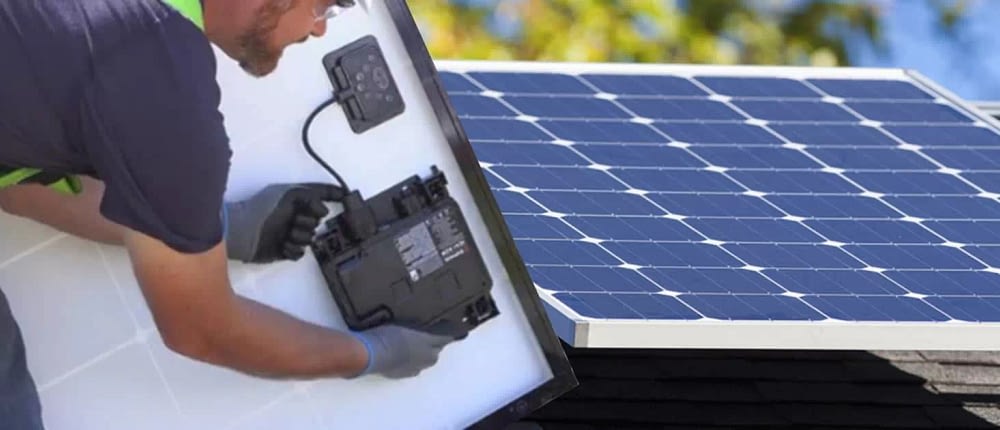
Is Selling Solar Energy Back Worth It?
Have you ever thought about the excess solar energy generated by your home’s solar panels back to the grid? It may seem like a novel idea, but’s actually becoming a popular option for homeowners looking to make some extra cash while helping the environment. In this article, we will explore whether selling solar energy back to the grid is a profitable option.
The Rise of Solar Energy
Before diving into the specifics of selling solar energy back to the grid, let’s first take a moment to appreciate the rapid growth of solar power. Over the past decade, solar energy has experienced a meteoric rise in popularity. More and more homeowners are installing solar panels on their rooftops, taking advantage of the abundant renewable energy source that the sun provides.
In addition to environmental benefits, solar energy also offers financial savings. By generating your own electricity, you can reduce or even eliminate your reliance on the traditional power grid. This translates into lower utility bills and potentially significant long-term savings.
The Basics of Selling Solar Energy Back to the Grid

When you install solar panels, any excess electricity that you generate is sent back to the main power grid. This surplus energy is typically credited to your account, which you can then use during times when your solar panels are not producing enough energy, such as at night or during cloudy days.
If you generate more electricity than you consume over a given period, you may have the option to sell the excess energy back to the grid. This is known as net metering or feed-in tariffs, depending on where you live. The exact terms and conditions of selling solar energy back to the grid vary from one utility company to another, and they may also differ based on your location.
The Pros and Cons of Selling Solar Energy Back to the Grid
Selling solar energy back to the grid has its fair share of advantages and disadvantages. Let’s take a closer look at both sides of the equation.
1. The Pros:
1.1. Financial Rewards: Arguably the most appealing aspect of selling solar energy back to the grid is the potential financial rewards. Depending on the rates set by your utility company, you could receive credit for the excess electricity you generate. This credit can be used to offset your future energy bills or even generate revenue if you produce a significant surplus.
1.2. Environmental Benefits: By selling your excess solar energy back to the grid, you are effectively contributing to a cleaner and more sustainable energy system. This helps reduce dependence on fossil fuels and mitigates the harmful effects of climate change.
1.3. Incentives and Tax Benefits: Many governments and utility companies offer incentives and tax benefits to encourage homeowners to install solar panels. These incentives can help offset the initial installation costs and increase the profitability of selling solar energy back to the grid.
2. The Cons:
2.1. Limited Available Credit: While it’s great to receive credits for the excess energy you generate, some utility companies have limitations on the amount of credit you can accumulate. This means that any surplus energy beyond a certain threshold may not contribute to your financial benefits.
2.2. Time-Based Rates: Some utility companies implement time-based rates, where they offer different rates for buying and selling electricity depending on the time of day. This can complicate the profitability of selling solar energy back to the grid, as you need to carefully monitor and calibrate your energy consumption patterns to maximize your financial gains.
2.3. Initial Cost: The installation of solar panels can come with a hefty upfront cost. While this can be offset in part by incentives and tax benefits, it may take several years before you break even and start experiencing real financial gains.
Real-Life Examples of Successful Solar Energy Sellers
To illustrate the profitability of selling solar energy back to the grid, let’s take a look at a couple of real-life examples from homeowners who have embraced this option.
1. The Green Energy Enthusiast:
Meet Sarah, a passionate advocate for green energy. Sarah lives in a sunny region and has a large solar panel installation on her roof. She generates more electricity than she consumes on most days, allowing her to sell a significant amount of energy back to the grid.
Sarah researched different utility companies in her area and found a generous net metering program that offered a fair credit rate for her surplus energy. Over time, she accumulated a substantial amount of credits, which she could use to offset her energy bills during peak usage periods.
Eventually, Sarah’s surplus energy credits exceeded her consumption, resulting in a profit. She decided to reinvest this profit by expanding her solar panel installation even further. Sarah now enjoys a sizeable monthly credit and is delighted to contribute to a more sustainable future while making money from her solar panels.
2. The Cost-Conscious Family:
Now, let’s meet the Johnsons, a typical middle-class family trying to make their budget stretch further. Concerned about rising energy bills, they decided to invest in solar panels to reduce their monthly expenses.
While the Johnsons’ solar panel system generates enough electricity to cover their needs, they do have some surplus energy that can be sold back to the grid. However, their utility company applies time-based rates, making it more challenging to maximize their profit potential.
To tackle this challenge, the Johnsons adjusted their energy consumption patterns to align with the utility company’s rates. They focused on running major appliances, such as their dishwasher and washing machine, during periods of lower electricity prices and minimized their energy usage during peak-rate periods.
This strategy allowed the Johnsons to effectively sell their surplus energy back to the grid at favorable rates. While they may not generate a significant profit, they have successfully reduced their energy bills and achieved a more sustainable lifestyle.
In conclusion, selling solar energy back to the grid can be a profitable option, but it’s essential to consider the advantages and disadvantages. By carefully researching net metering programs and understanding the policies of your utility company, you can maximize your financial benefits.
Resource:
Solar Energy
The Sun’s Power: Harnessing Solar Energy For A Sustainable Future
Solar Learning Center – Your Guide To Solar Energy!
#RenewableEnergy #SustainableTechnology #Clean #SolarPanelInstallation #SolarPowerGeneration
Additionally, it’s crucial to evaluate your energy-generation capabilities and consumption patterns. If you generate surplus energy and can adapt your energy usage to take advantage of favorable rates, you may have a greater chance of making a profit from selling solar energy back to the grid.
Whether you are an environmental enthusiast like Sarah or a cost-conscious family like the Johnsons, embracing solar energy and exploring the option to sell excess energy back to the grid can provide financial rewards and contribute to a greener future. So why not join the solar revolution and see if your rooftop can become a source of profit?













